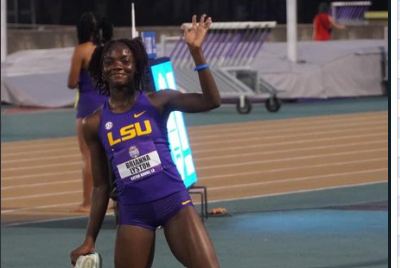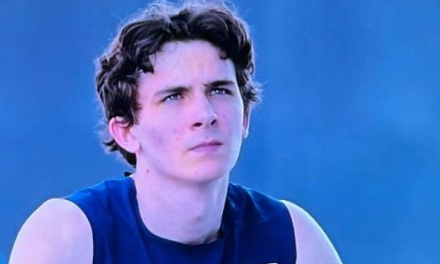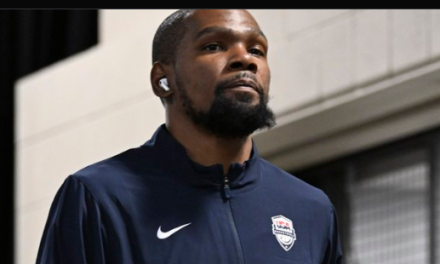College sports authorities and antitrust attorneys announced a landmark settlement on Friday that could potentially pay college athletes billions of dollars in damages and establish a new model for athlete compensation. The proposed agreement, if approved by U.S. District Court Judge Claudia Wilken, would mark a significant shift in the rules governing the multibillion-dollar college athletics industry.
The settlement aims to address three antitrust lawsuits that challenge the restrictions on pay and benefits that athletes can receive for their work and publicity rights. It would allow schools to compensate players with a share of the revenue generated by major college sports programs and provide nearly $2.8 billion in back damages to athletes over a 10-year period. Additionally, the agreement would remove limits on the number of scholarships colleges can offer and set caps on team roster sizes.
📢 Big changes in college sports! The NCAA’s new antitrust agreement reshapes athletics with increased roster limits, revamped revenue sharing, and clearer NIL guidelines. 🌟 This landmark deal could transform the future of college football and https://t.co/YLteX2pTHl
— Rapid News Digest (@RapidNewsDigest) July 27, 2024
“This settlement is an important step forward for student-athletes and college sports,” said NCAA President Charlie Baker and other top college athletics conference commissioners in a joint statement. However, they emphasized the need for federal legislation to protect the agreement from being undermined by a patchwork of state laws and ongoing litigation. The NCAA and colleges have long sought to prevent student-athletes from being classified as employees, which could lead to demands for salaries and union protections.
Earlier this month, the 3rd Circuit Court of Appeals ruled that college athletes could be considered employees under the Fair Labor Standards Act. This decision follows the move by the Dartmouth men’s basketball team to become the first collegiate players to form a union, based on a ruling by a National Labor Relations Board regional director.
The new compensation model outlined in the settlement represents a significant victory for attorneys who have challenged the NCAA’s restrictions on athlete compensation. In 2021, the Supreme Court unanimously ruled that limits on player education benefits violated antitrust laws. The total value of the new payments and benefits to college athletes is projected to exceed $20 billion over the next decade.
“For far too long, these athletes have been deprived of their economic rights in an unjust system that will now, finally, be fundamentally reformed,” said Jeffrey Kessler, a prominent antitrust litigator representing the players. “The new system will allow athletes to be fairly rewarded for their contributions, and college sports will continue to thrive.”
The settlement includes provisions for schools and the NCAA to share the cost of the nearly $2.8 billion in back damages. Beginning in the 2025-26 academic year, schools will have the option to share up to 22 percent of the average media, ticket, and sponsorship revenue generated by major sports programs with players. This includes the possibility for schools to enter into direct publicity deals with athletes, while outside companies and organizations can also engage in marketing deals, subject to new oversight and enforcement mechanisms.
Clemson’s Dabo Swinney upset by new scholarship rule: ‘We want to keep our walk-ons’ – A report surfaced on Wednesday that claims the NCAA is working on increasing the roster limit in college football from 85 players to 105.https://t.co/BpEIZmbfrw
— Chris Rodgers 🦚 🇺🇸 (@rodgeau) July 27, 2024
The attorneys for the plaintiffs have agreed to support any proposed federal or state legislation that would formalize the settlement into law, including cooperating to support antitrust immunity for actions taken by college athletics supervisors to comply with the agreement.
This proposed settlement, if finalized, could transform the landscape of college sports, ensuring that athletes receive compensation commensurate with their contributions while maintaining the viability of college athletics programs.
Key Points:
- Landmark Settlement Proposal: College sports authorities and antitrust attorneys have proposed a settlement to compensate college athletes with billions of dollars and establish a new compensation model.
- Key Provisions: The settlement includes nearly $2.8 billion in back damages, revenue sharing from major sports programs, and removal of scholarship limits.
- Need for Federal Legislation: College officials urge Congress to pass laws to protect the settlement, preventing athletes from being classified as employees with salary and union rights.
- Court Rulings and Unionization: Recent court rulings and moves by athletes, like the Dartmouth men’s basketball team, to form unions highlight the evolving legal landscape.
- Future Implications: The settlement aims to exceed $20 billion in value over the next decade, marking a major shift in how college athletes are compensated.
Lap Fu Ip – Reprintedwith permission of Whatfinger News







